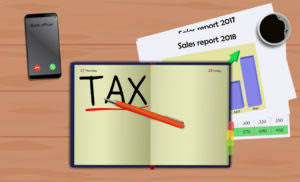
Use Form 2210, Underpayment of Estimated Tax by Individuals, Estates, and Trusts (or Form 2220, Underpayment of Estimated Tax by Corporations), to see if you owe a penalty for underpaying your estimated tax. Please refer to the Form 1040 and 1040-SR Instructions or Form 1120 InstructionsPDF, for where to report the estimated tax penalty on your return. Qualified taxpayers with existing payment plans may be able to use the Online Payment Agreement to make changes including revising payment dates, payment estimated tax amounts or bank information for payments made by direct debit. This interview will help you determine if you’re required to make estimated tax payments for 2024 or if you meet an exception. Accruing 20-25% interest on your credit card bill will easily negate a 3-4% return on spending through the points you earn. First, doing so can help you earn valuable rewards and give you more time to pay off a high tax bill if you have a 0% APR offer on a new card or are targeted for a no-fee, pay-over-time plan.

And if you want help calculating your taxes, you can get straight to the tax preparation with our free estimated tax calculator. Whatever amount you estimate you will owe for the year, you should pay it early in the year and get it out of the way. Consider 25% for the first payment and 50% for the second payment in order to have a large chunk of debt taken care of in advance, or ahead of a downturn in business. Our mission is to provide readers with accurate and unbiased information, and we have editorial standards in place to ensure that happens. Our editors and reporters thoroughly fact-check editorial content to ensure the information you’re reading is accurate. We maintain a firewall between our advertisers and our editorial team.
How to pay estimated taxes
Our partners cannot pay us to guarantee favorable reviews of their products or services. Avoid a penalty by filing and paying your tax by the due date, even if you can’t pay what you owe. You’ll need to confirm your identity before making a payment using pay now options. Make a payment today, or schedule a payment, without signing up for an IRS Online Account. Pay from your bank account, your Debit or Credit Card, or even with digital wallet.

Because Stephanie earned more than $400 this year, she will also have to pay self-employment tax. To calculate self-employment tax, she first has to multiply her estimated total income ($90,000) by 92.35%—this is effectively her self-employment taxable income. She then multiplies this number by 15.3%, the self-employment tax rate. It’s the combination of Social Security tax (12.4%) and Medicare (2.9%). To avoid penalties, the payment—by check or money order accompanied by the correct IRS voucher—must be postmarked by the due date.
Bankrate logo
So you may want to avoid cutting your payments too close to the 90 percent mark to give yourself a safety net. You also have the option when you file your return to apply some or all of your refund to your estimated tax payments for the coming tax year. You may send estimated tax payments with Form 1040-ES by mail, pay online, by phone or from your mobile device using the IRS2Go app. If you’re not someone who normally pays estimated quarterly taxes, but your return isn’t quite ready for the IRS by tax day, it’s a good idea to file for an automatic six-month tax extension by the tax filing deadline. Corporations generally have to make estimated tax payments if they expect to owe tax of $500 or more when their return is filed.
- These plans can help taxpayers distribute their debt across a manageable timeline while mitigating the risk of severe financial disruption.
- The reason it’s called “estimated” is because you’re estimating how much income you’ll make this year, and paying taxes on that amount (federal income tax, self-employment tax, and any other applicable taxes).
- Sign up to get the latest tax tips, information on personal finance and other key resources sent straight to your email.
- If the latter is the case, make sure you plan ahead and give adequate time so that you don’t miss the deadlines.
- There is a special line on Form W-4 for you to enter the additional amount you want your employer to withhold.
At the start of the tax year, Bench provides small businesses with quarterly tax vouchers for the upcoming year, so you’re never left guessing how much you’ll owe. To learn more about our quarterly tax support, including annual filing, view our small business tax services. Estimated quarterly tax payments are due four times per year, on the 15th of April, June, September, and January (or the next business day if it’s a weekend or holiday). If you’re an employee, your employer typically withholds taxes from every paycheck and sends the money to the IRS, and probably to your state government as well. And, if you’re like most wage earners, you get a nice refund at tax time.
Check your estimated tax
So if you owe $10,000 and want to pay via credit card, you’ll be on the hook for an extra $182-$198 in fees, depending on the service you use. You can apply for one online, by phone or mail, or request one in person. From there you can apply for either a short- or long-term plan and pay the requisite setup fees. You’ll want to review your payment plan and stick to the defined schedule, if you have one. Finally, the IRS allows you to adjust and revise your payment plan if needed.
- The IRS reminds taxpayers that they have rights and protections throughout the collection process.
- Examples of income sources that are not subject to withholding taxes include interest, dividends, and taxable alimony payments.
- Most people could not afford paying an entire year’s tax liability all at once, and being forced to do so could even push them into debt or bankruptcy.
- The next payments are due June 15 and Sept. 15, with the last quarter’s payment due on Jan. 15 of the following year.
- IRS Direct Pay is one of the simplest and most affordable options for tackling a tax bill.
